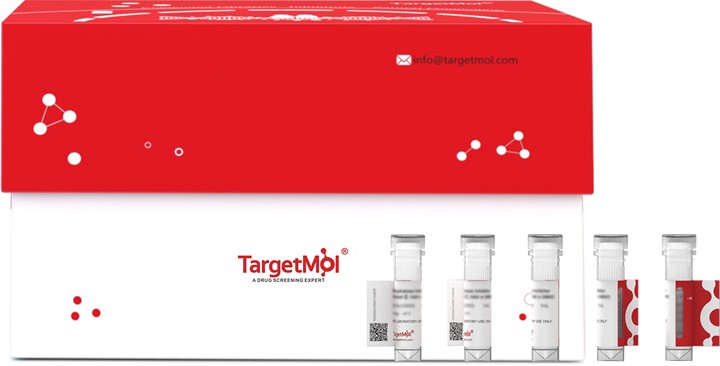 Your shopping cart is currently empty
Your shopping cart is currently empty
EpCAM/TROP1 Protein, Mouse, Recombinant (hFc)
Epithelial Cellular Adhesion Molecule (Ep-CAM), also known as EGP314, mEGP314, Protein 289A, Tumor-associated calcium signal transducer 1, CD326, belongs to the EPCAM family. Its' monomer subunit structure interacts with phosphorylated CLDN7. Ep-CAM may act as a physical homophilic interaction molecule between intestinal epithelial cells (IECs) and intraepithelial lymphocytes (IELs) at the mucosal epithelium for providing immunological barrier as a first line of defense against mucosal infection. It plays a role in embryonic stem cells proliferation and differentiation. It also up-regulates the expression of FABP5, MYC and cyclins A and E. The post-translational modification glycosylation at Asn-198 is crucial for protein stability.

EpCAM/TROP1 Protein, Mouse, Recombinant (hFc)
| Pack Size | Price | USA Warehouse | Global Warehouse | Quantity |
|---|---|---|---|---|
| 5 μg | $39 | 7-10 days | 7-10 days | |
| 10 μg | $60 | 7-10 days | 7-10 days | |
| 20 μg | $96 | 7-10 days | 7-10 days | |
| 50 μg | $183 | 7-10 days | 7-10 days | |
| 100 μg | $282 | 7-10 days | 7-10 days | |
| 200 μg | $436 | 7-10 days | 7-10 days | |
| 500 μg | $781 | 7-10 days | 7-10 days | |
| 1 mg | $1,120 | 7-10 days | 7-10 days |
Product Information
| Biological Activity | Activity has not been tested. It is theoretically active, but we cannot guarantee it. If you require protein activity, we recommend choosing the eukaryotic expression version first. |
| Description | Epithelial Cellular Adhesion Molecule (Ep-CAM), also known as EGP314, mEGP314, Protein 289A, Tumor-associated calcium signal transducer 1, CD326, belongs to the EPCAM family. Its' monomer subunit structure interacts with phosphorylated CLDN7. Ep-CAM may act as a physical homophilic interaction molecule between intestinal epithelial cells (IECs) and intraepithelial lymphocytes (IELs) at the mucosal epithelium for providing immunological barrier as a first line of defense against mucosal infection. It plays a role in embryonic stem cells proliferation and differentiation. It also up-regulates the expression of FABP5, MYC and cyclins A and E. The post-translational modification glycosylation at Asn-198 is crucial for protein stability. |
| Species | Mouse |
| Expression System | HEK293 Cells |
| Tag | C-hFc |
| Accession Number | Q99JW5 |
| Synonyms | TROP1,TACSTD1,TACST-1,MOC31,EpCAM,EGP40,EGP314,EGP-2,CD326,ACSTD1,323/A3,17-1A |
| Amino Acid | Gln24-Thr266 |
| Construction | Gln24-Thr266 |
| Protein Purity | Greater than 95% as determined by reducing SDS-PAGE. (QC verified) |
| Molecular Weight | 60-80 KDa (reducing condition) |
| Endotoxin | < 0.1 ng/µg (1 EU/µg) as determined by LAL test. |
| Formulation | Lyophilized from a solution filtered through a 0.22 μm filter, containing PBS, pH 7.4. |
| Reconstitution | Reconstitute the lyophilized protein in distilled water. The product concentration should not be less than 100 μg/ml. Before opening, centrifuge the tube to collect powder at the bottom. After adding the reconstitution buffer, avoid vortexing or pipetting for mixing. |
| Stability & Storage | Lyophilized powders can be stably stored for over 12 months, while liquid products can be stored for 6-12 months at -80°C. For reconstituted protein solutions, the solution can be stored at -20°C to -80°C for at least 3 months. Please avoid multiple freeze-thaw cycles and store products in aliquots. |
| Shipping | In general, Lyophilized powders are shipping with blue ice. Solutions are shipping with dry ice. |
| Research Background | Epithelial Cellular Adhesion Molecule (Ep-CAM), also known as EGP314, mEGP314, Protein 289A, Tumor-associated calcium signal transducer 1, CD326, belongs to the EPCAM family. Its’ monomer subunit structure interacts with phosphorylated CLDN7. Ep-CAM may act as a physical homophilic interaction molecule between intestinal epithelial cells (IECs) and intraepithelial lymphocytes (IELs) at the mucosal epithelium for providing immunological barrier as a first line of defense against mucosal infection. It plays a role in embryonic stem cells proliferation and differentiation. It also up-regulates the expression of FABP5, MYC and cyclins A and E. The post-translational modification glycosylation at Asn-198 is crucial for protein stability. |
Dose Conversion
Calculator
Tech Support
Keywords
| Size | Quantity | Unit Price | Amount | Operation |
|---|

Copyright © 2015-2025 TargetMol Chemicals Inc. All Rights Reserved.



